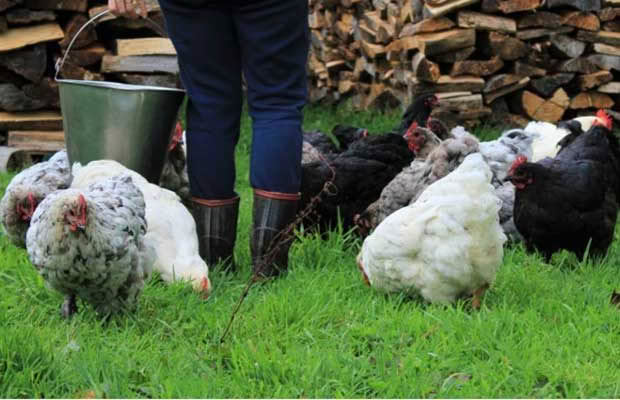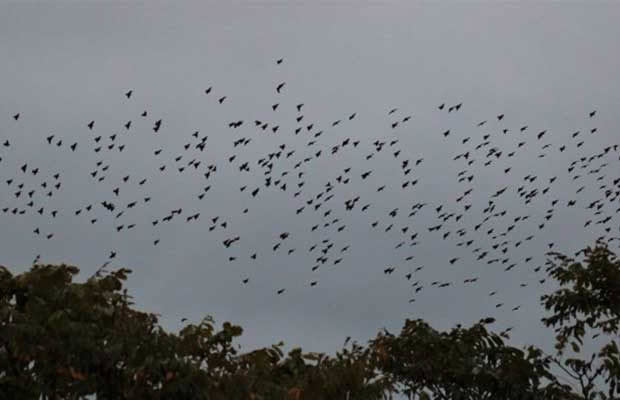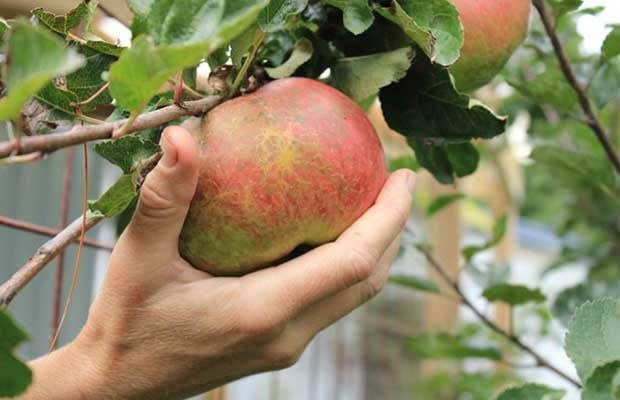Rebecca Stewart: The joys of an autumn evening

A walk through her land during an autumn evening sees Rebecca Stewart reflect on the work and reward of many years.
Words: Rebecca Stewart Images: Summer Stewart
The fading light reminds us it is time to feed the animals. This daily ritual includes shutting up the chooks for the night and they are waiting for us at the gate. The flock mills around our feet and thus begins the evening dance across the paddock; a sidestep and a hop, a shuffle and sweep of the foot all to avoid tripping over the excited hens eager for their evening treats.
If we are feeling energetic, we race them to the coop in a mad dash and a flurry of frantic chooks brings up the rear. The cheeky fantails join in the fun, flitting about us. It is good to see them back from their summer spent in the cool and dark of the bush.
In the old man pines a racket is building as the starlings gather from all around the area. Their raucous chatter ceases suddenly as they launch into the sky enmass. More flocks swoop in to merge with the growing gathering and the aerial acrobatics begin. This is a murmuration, a stunning, awe-inspiring natural phenomenon which occurs each autumn in our quiet valley. We watch as the starlings dance in the evening sky, their movements appear choreographed, graceful and flowing like the silk ribbon of a gymnast. Thousands of birds moving as of one mind, the darkness of their feathers backlit by the sunsetting beyond the hills. We stand transfixed until the grumpy squeals of the pigs draw our attention back to the land.

It is their turn for an evening meal, and they will make sure we do not forget them. For most of our animals, the morning and evening meals are supplementary to their daily grazing and foraging. It helps keep them manageable and used to contact with us and we get a chance to cast an eye over them to make sure everything is fine. As we better develop their independent feed systems, we will still maintain a set feed time for these reasons. Even with the sheep and cattle we take the time to walk amongst them, to maintain contact and observation. An issue spotted early is a small issue, left too long and it can be a big issue.
We have the same routine with the garden. A stroll through the food forest in the twilight shows butternut foliage slowing dying and so it will be time to harvest the many golden pumpkins soon. I free some of them from the tangle of overgrown grass and comfrey, allowing the sun to develop their flavour more. We close the tunnel house doors against the night-time chill, the banana’s long leaves now brush the roof and this warm humid space is developing the feel of a forest. The Hick’s Early mulberry has thrived this year protected from the frost and beneath its drooping branches shelters a pink pineapple that has thrown a couple of pups. The whole space smells of damp earth and chillies, an interesting mix of fragrances.
Outside the Monty’s Surprise apples weigh down the boughs of the still-young tree. These massive apples will be stewed and bottled, juiced for apple cider vinegar, and perhaps dehydrated for winter snacking. As they store well there is no hurry to process them, so we pack them into to crates to store in our low-tech cool room. This room, recently built and mostly from upcycled materials, has extended our food preservation capabilities within our off-grid systems.

As the autumn harvests are squirrelled away, we appreciate seeing our work of many years coming to fruition. There might be another global crisis looming on the horizon and yet we focus on what we can do here and now. We are not the only ones. The interest in growing food and developing a self-sufficient mindset is expanding at a phenomenal rate. Perhaps, a return to the ways of the ancestors offers stability in an ever-changing world.

